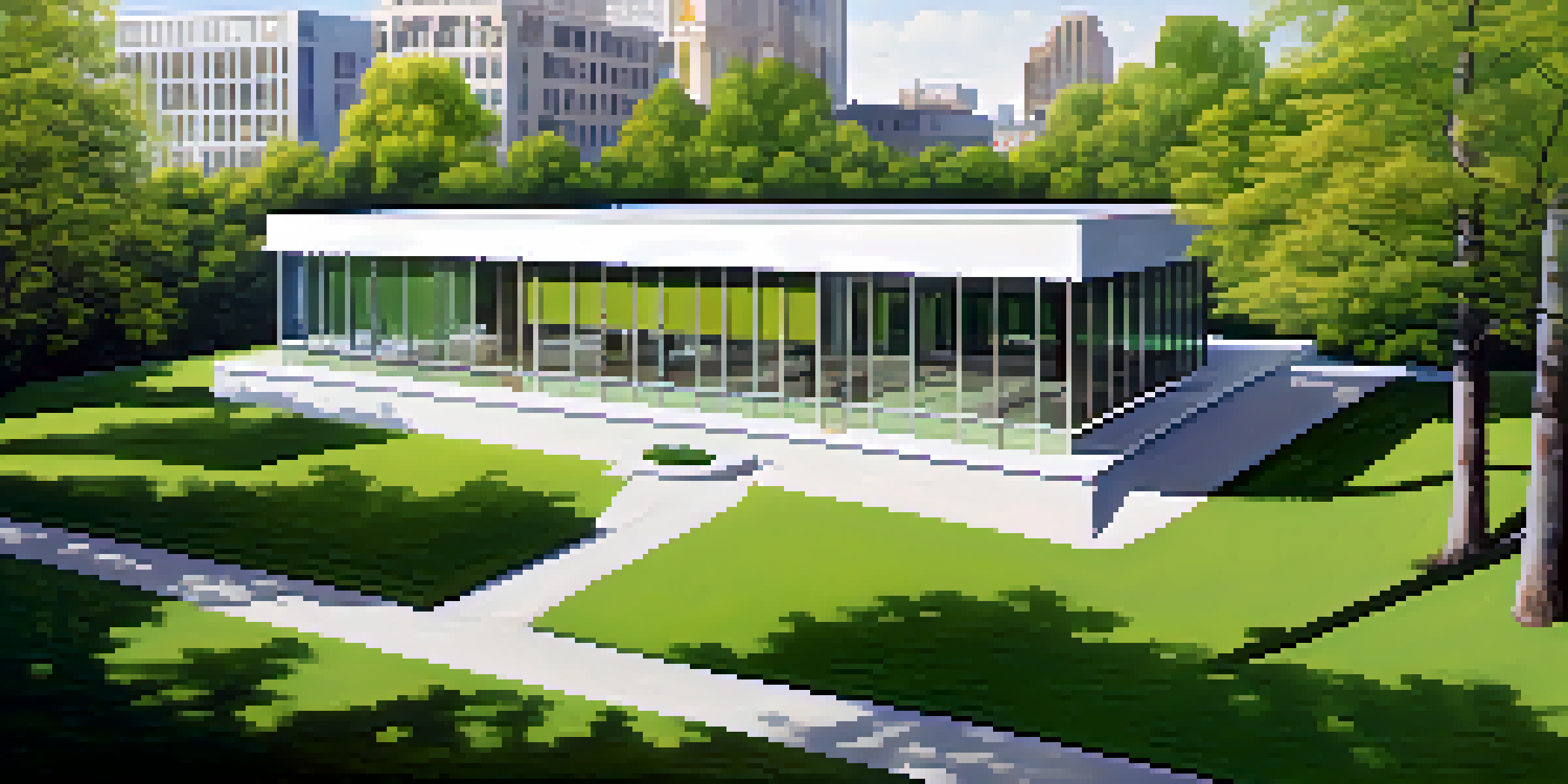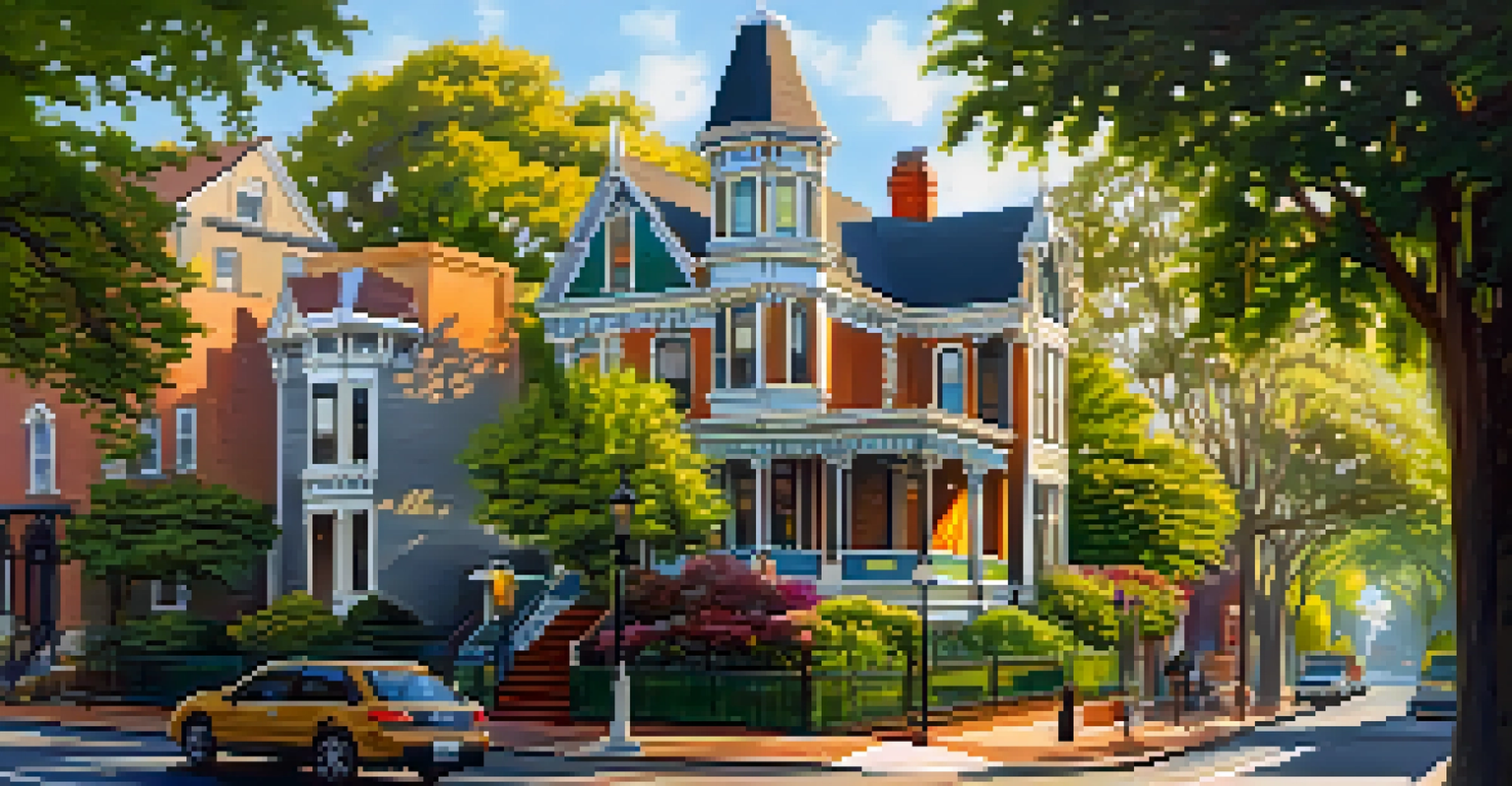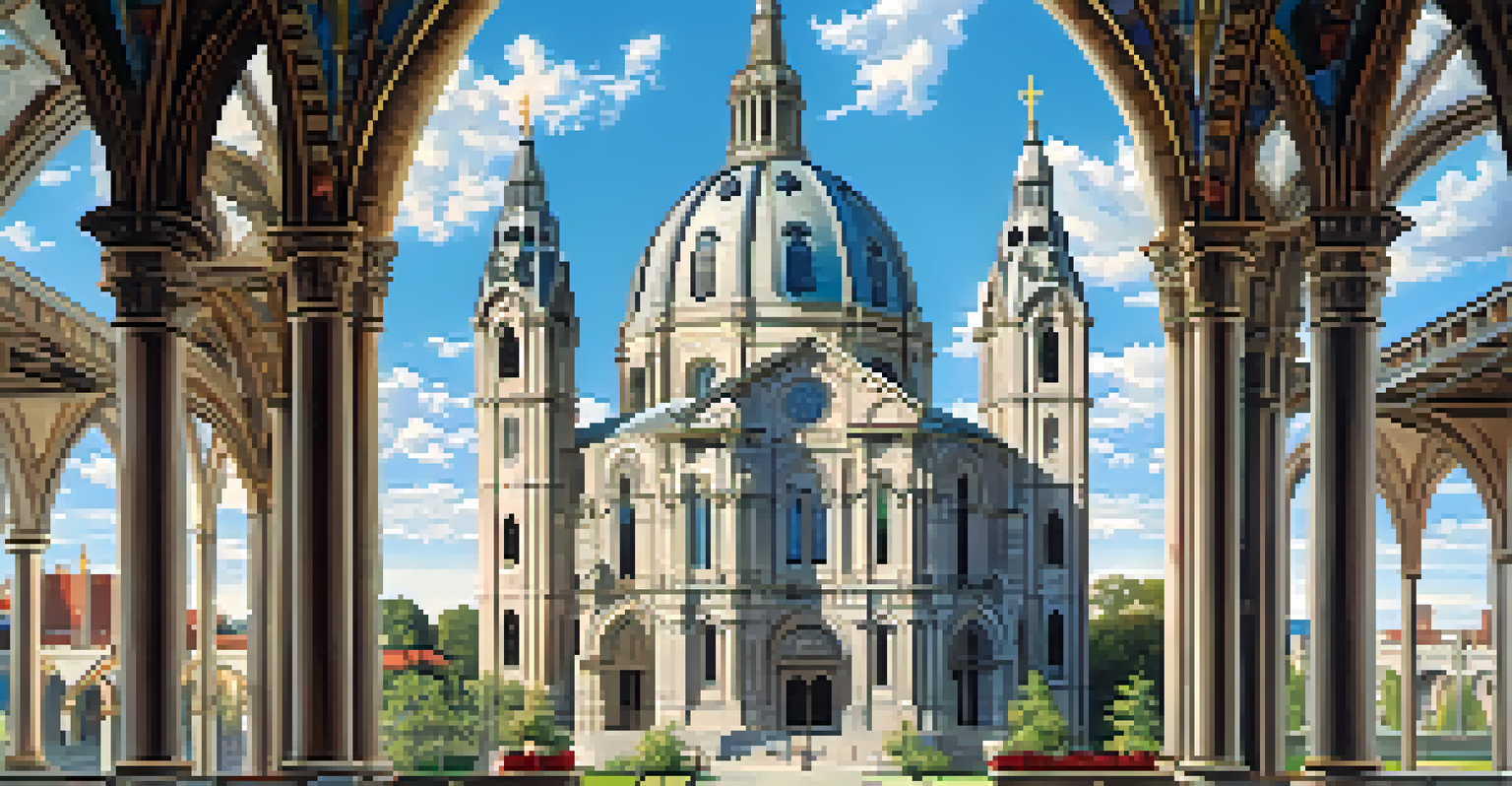Exploring the Historic Districts of St. Louis Architecture

A Glimpse into St. Louis's Architectural Past
St. Louis boasts a vibrant tapestry of architectural styles that tell the city's story. From Victorian mansions to modernist structures, each building reflects the era it was built in. Walking through these historic districts feels like stepping back in time, where every corner has a tale to share.
Architecture is the learned game, correct and magnificent, of forms assembled in the light.
The city's architecture speaks volumes about its growth, culture, and the people who shaped it. For instance, the iconic Gateway Arch not only symbolizes westward expansion but also showcases modern engineering. This blend of old and new makes St. Louis's architecture a fascinating subject for exploration.
As you wander through the streets, you'll encounter various neighborhoods, each with its unique charm and character. Whether you're an architecture enthusiast or just looking for a leisurely stroll, the historic districts of St. Louis offer something for everyone.
The French Colonial Influence on St. Louis
One of the first architectural styles that defined St. Louis is French Colonial. These early structures, characterized by their simple yet sturdy design, reflect the city's beginnings as a French settlement in the 18th century. The iconic 'poteaux-en-terre' technique, which uses wooden posts to support the house, is a fascinating aspect of this style.

As you explore areas like the historic Soulard neighborhood, you'll notice these charming homes with their steep roofs and wide porches. Many have been lovingly preserved, allowing visitors to appreciate the craftsmanship of the time. Each house tells a story of resilience, adapting to the changing needs of the community while maintaining its original character.
St. Louis's Architectural Diversity
The city showcases a rich variety of architectural styles, from French Colonial to modernist designs, reflecting its historical evolution.
The French Colonial influence is not just limited to residential buildings; it also extends to churches and public buildings. The stunning architecture of St. Louis's historic churches, like the Basilica of St. Louis, King of France, showcases intricate designs that echo this colonial heritage.
Victorian Elegance in Lafayette Square
Lafayette Square is a treasure trove of Victorian architecture, showcasing the elegance of the 19th century. The neighborhood features beautiful homes adorned with intricate details, such as ornate gables and colorful stained glass. It's as if each house is a piece of art, inviting you to admire its craftsmanship.
A city is not an accident but the result of coherent visions and aims.
Walking through Lafayette Square, you'll feel the charm of a bygone era, with tree-lined streets and lush gardens. The park at the heart of the square adds to the area's quaint atmosphere, making it a perfect spot for a leisurely afternoon. This neighborhood is a testament to St. Louis's dedication to preserving its architectural heritage.
Many of the Victorian homes have been lovingly restored, offering a glimpse into the lives of those who once resided there. As you stroll past these stunning residences, you can't help but imagine the stories they hold, from grand celebrations to quiet family moments.
The Gothic Revival of the Hill District
The Hill District is renowned for its strong Italian heritage and its striking Gothic Revival architecture. This neighborhood is home to several churches that feature pointed arches, ribbed vaults, and stunning stained glass windows. These elements create a sense of awe, drawing visitors into their historic sanctuaries.
Among these architectural gems, the Italian-American community has maintained a rich tradition of family and culture. As you walk through the neighborhood, you'll encounter delightful restaurants and markets that reflect this heritage, making it a sensory experience. The blend of architecture and culture is a highlight of the Hill District.
Community Efforts in Restoration
Organizations and residents work together to restore historic buildings, preserving St. Louis's architectural heritage for future generations.
Visiting the Hill offers more than just beautiful buildings; it provides a connection to the community's past. The Gothic Revival structures stand as a testament to the faith and resilience of the families that built them, creating a lasting legacy in St. Louis.
Modernist Trends in the Central West End
As you venture into the Central West End, you'll find a contrast to the historical styles of other districts. This area is known for its modernist architecture, which emerged in the mid-20th century. Buildings with clean lines, large windows, and open spaces define this innovative approach to design.
The Central West End is a vibrant hub that blends residential and commercial spaces, showcasing the evolution of urban architecture. The area is home to the St. Louis Art Museum and the Missouri History Museum, both of which feature stunning modernist designs. These cultural institutions contribute to the district's dynamic atmosphere.
Exploring the Central West End is an invitation to appreciate how architecture can evolve while still respecting its surroundings. The modernist structures here reflect a forward-thinking vision that complements the historic elements of St. Louis, creating a unique urban landscape.
Preserving History: The Role of Restoration
The preservation of St. Louis's architectural heritage is a community effort that deserves recognition. Various organizations work tirelessly to restore and maintain historic buildings, ensuring that future generations can appreciate their beauty. This commitment to restoration highlights the value the community places on its history.
Restoration projects often involve meticulous attention to detail, from selecting the right materials to ensuring architectural integrity. These efforts not only protect the buildings themselves but also enrich the cultural landscape of the city. It's a labor of love that requires expertise and passion.
Architectural Tours Enhance Knowledge
Guided tours offer deep insights into St. Louis's architectural gems, transforming exploration into an engaging educational experience.
Visitors can witness these restoration efforts firsthand by exploring neighborhoods undergoing revitalization. Each restored building serves as a reminder of the city's rich past and the dedication of those who strive to preserve it. It's a beautiful blend of history and hope for the future.
Architectural Tours: A Deeper Dive
For those eager to learn more about St. Louis's architectural wonders, guided tours offer an excellent opportunity to explore. These tours often highlight the unique features of each district, providing insights into the stories behind the buildings. Whether you prefer walking tours or bus excursions, there's something for everyone.
Knowledgeable guides share fascinating anecdotes about the architects, historical events, and cultural significance of the structures. This immersive experience allows you to appreciate the architecture on a deeper level, transforming a simple stroll into an enlightening journey. It's an engaging way to connect with the city's past.

Participating in an architectural tour not only enriches your understanding but also fosters a sense of community. You'll meet fellow history enthusiasts and share in the joy of discovering the hidden gems of St. Louis. It's a perfect way to bond over a shared love for architecture and history.
The Future of St. Louis Architecture
As St. Louis continues to evolve, its architectural landscape must adapt to modern needs while honoring its rich history. New developments are being designed with sustainability in mind, integrating green spaces and energy-efficient technologies. This forward-thinking approach seeks to create a harmonious blend of the old and the new.
Community engagement plays a crucial role in shaping the future of St. Louis architecture. Residents and stakeholders are actively involved in discussions about new projects, ensuring that the character of the city is preserved. This collaborative effort highlights the importance of community in architectural development.
Looking ahead, St. Louis's architectural future is bright, as it embraces innovation while respecting its historical roots. By balancing progress with preservation, the city can continue to be a vibrant hub of culture and design, inviting future generations to explore its architectural treasures.